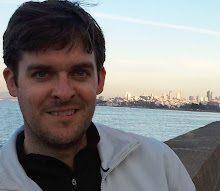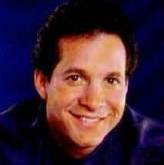Ben Affleck’s second directorial effort, THE TOWN, is a competent entry in the heist-movie genre which distinguishes him as an auteur of Boston-centric cinema. Just as much high detail and style for the unofficial “Capital of New England” is afforded by the filmmakers as Truffaut and Godard likewise have bestowed upon their native Paris. Beantown’s rich history of economic and technological growth, political impact and its reputation for being a positive center of higher education is threatened by an element of crime pouring out of the open wound of its neighborhood of Charlestown, MA regrettably dubbed: “The Bank Robbery Capital of America”.
Forget about the film’s apparent allusions to not only the South Boston ambience and epically familial tragedy of Scorsese’s THE DEPARTED, the costumed ensemble of crooks and their Angeleno crime waves in Bigelow’s POINT BREAK and the sympathetic musings of a master thief in Jewison’s THE THOMAS CROWN AFFAIR. The mechanics of Affleck’s movie-making toolkit are on full display and despite the barrage of profane machismo, combine in a way that resembles a throwback to classic production aesthetics when scenes of intense action were storyboarded and one-on-one moments between characters exuded either a tender or tense theatricality. One scene in particular exhibiting both of these qualities is handled with the utmost sensitivity which reaches an apex of delightfully, Hitchcockian suspense.
After a series of romantically tinged rendezvous between skilled bank robber, Doug MacRay (Ben Affleck) and his mark, a former bank manager, Claire Keesey (Rebecca Hall), they reach a point in their relationship when their feelings for one another are no longer inhibited by nervous restraint and a desire to be with the other is as palpable as a blow to the head. Claire has no idea that the man who sits opposite her sipping on a soft drink on a momentously sunny day in the park also helms a crew of professional bank robbers responsible for successfully pulling off a daring heist of her bank and ultimately holding her hostage. Under the guise of a compassionate friend to help calm her nerves after experiencing post-traumatic stress from the episode, Doug engages in a ruse of sharing her company to determine if she’s squealed to the authorities. As his hoax begins to disintegrate when true love becomes evident and is pondering “putting this whole town in my [his] rearview”, a figurative black cloud enters to unsettle the mood (also donning black clothing) in the form of Doug’s childhood friend and associate James “Jem” Coughlin (Jeremy Renner). What follows is a prime example of textbook-style editing and a cleverly coordinated composition of characters with James situated between Claire and Doug inquiring after their afternoon tryst while Doug focuses on concealing the tattoo on the back of James’ neck (the only evidence Claire recalled from the holdup) that will undoubtedly blow their cover.
The film continues on this consistent path of characters on the verge of becoming victorious only to be awakened by disillusionment. And with multiple modes of transportation present (cars, buses and trains), the boundaries of Charlestown seem impervious to escape. Just as in Clouzot’s classic white-knuckler, THE WAGES OF FEAR, its characters are not only trapped within the confines of its South American town’s invisible borders, but are suffocated by the fear of exhausting all opportunities for escape and not earning the wages necessary to secure their individual freedoms. Doug’s crew continues to knock over banks and elude the bluecoats as a kind of sport, but for what aim, it is never made entirely clear. In one respect, they are commissioned by Fergus Colm (Pete Postlethwaite), the big don, whose cover is a local flower shop (who slices thorns off of roses like someone who shears human flesh) and is responsible for organizing elaborate heists throughout town. On the other hand, it is an unfortunate vocation that generates massive doses of adrenaline and is possibly the one job they’re good at. It calls to mind an oxymoron: occupational hazard.
In Gregory La Cava’s classic, MY MAN GODFREY, Carlo (Mischa Auer) somberly speaks of money and its vice-grip over all in its grasp as “the Frankenstein monster that destroys souls”. As Affleck inventively stages the film’s climactic heist in the bowels of Fenway Park, a stadium which Fergus regards as a stately cathedral that must be invaded and financially toppled, is it just a coincidence that the renowned left field wall in the stadium is called the “Green Monster”? Money is as much a character in the film as any of its major players: it’s counted, bound, buried under ground, measured, analyzed, weighed, compared to a man’s (and woman’s) worth. It eventually leads one to the way of the gun or when someone like Claire can control the flow of it on a daily basis (demonstrated through her career as a bank manager), can perform a charitable act like refurbishing a decrepit ice rink. If there’s one thing we’ve learned from the movies it’s that crime does not pay.
A visible symbol that appears on a number of occasions throughout the film is the obelisk of the Bunker Hill Monument: the last vestige of law and order standing in a landscape marked by violence and corruption. Unlike the presence of other much taller financial, political and business institutions that surround it and have since fallen to decay or economic ruin, the towering, granite monolith suggests a strong foundation of values that are solid through and through. For the sake of THE TOWN, it is a recurring visual motif that acts as a firm reminder against lawlessness. Moreover, the sweeping shot of the tower is often spliced together with sequences featuring FBI Agents Adam Frawley (Jon Hamm) and Dino Ciampa (Titus Welliver) progressively gaining on Doug’s team’s tail. At one moment when Doug is walking the streets at night, the Monument looms behind him in the left-hand corner of the screen flooded by spotlights that gives the impression of conscious guilt overpowering him. Doug is obviously having serious doubts about his profession. Featured just as prominently in the film is the Leonard P. Zakim Bunker Hill Memorial Bridge in which its high-tension white cables resemble a net being thrown across a part of the town. Meanwhile, various police nets are strategically employed to catch Doug and his men but are repeatedly felled by his crew’s cunning. At times, the ten-lane bridge even appears to double as a cable-stayed prison cell. The effect that law enforcement has on Boston’s bridges is intensified when Agent Frawley orders the bridge to close on traffic after Doug’s team leads the fuzz on a high-powered, bullet-riddled chase through narrow street canals of brick and cobblestone.
Amidst the roaring blaze of TEC-9 gunfire followed by regular shower storms of lead bullets and wildly exciting (and seemingly storyboarded sequences of) vehicular battering rams leaving a wake of steel carnage throughout the circuitous streets of Charlestown, these elements are just props in Doug’s arsenal when combined with the theatricality of his team’s striking costumes. These consist of skulled monsters with thick dreadlocks, hockey masks, aged nuns in traditional habit culminating in the employment of Boston P.D., EMT and MBTA uniforms. As the heists grow more complicated, the manner of costume becomes increasingly stripped down to the flesh of the men donning them and as their faces are revealed, their fate seems rightfully sealed. To his advantage, Doug knows when the performance is over and exits the proverbial stage of Charlestown that Affleck’s players had populated. By the film’s climax, Doug has spirited away to an unnamed locale with no more familiar landmarks and has even fashioned himself a heavy beard. He appears drained of energy and out of character from the man he played in his former town. He not only lived there, he was THE TOWN; he owned it. So does Affleck, as its director.







